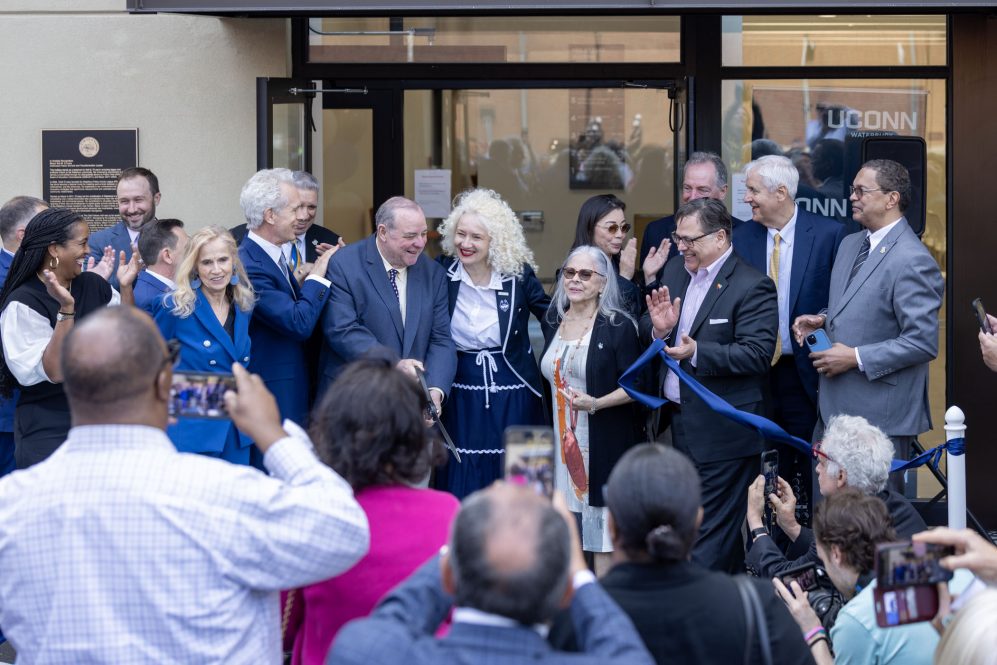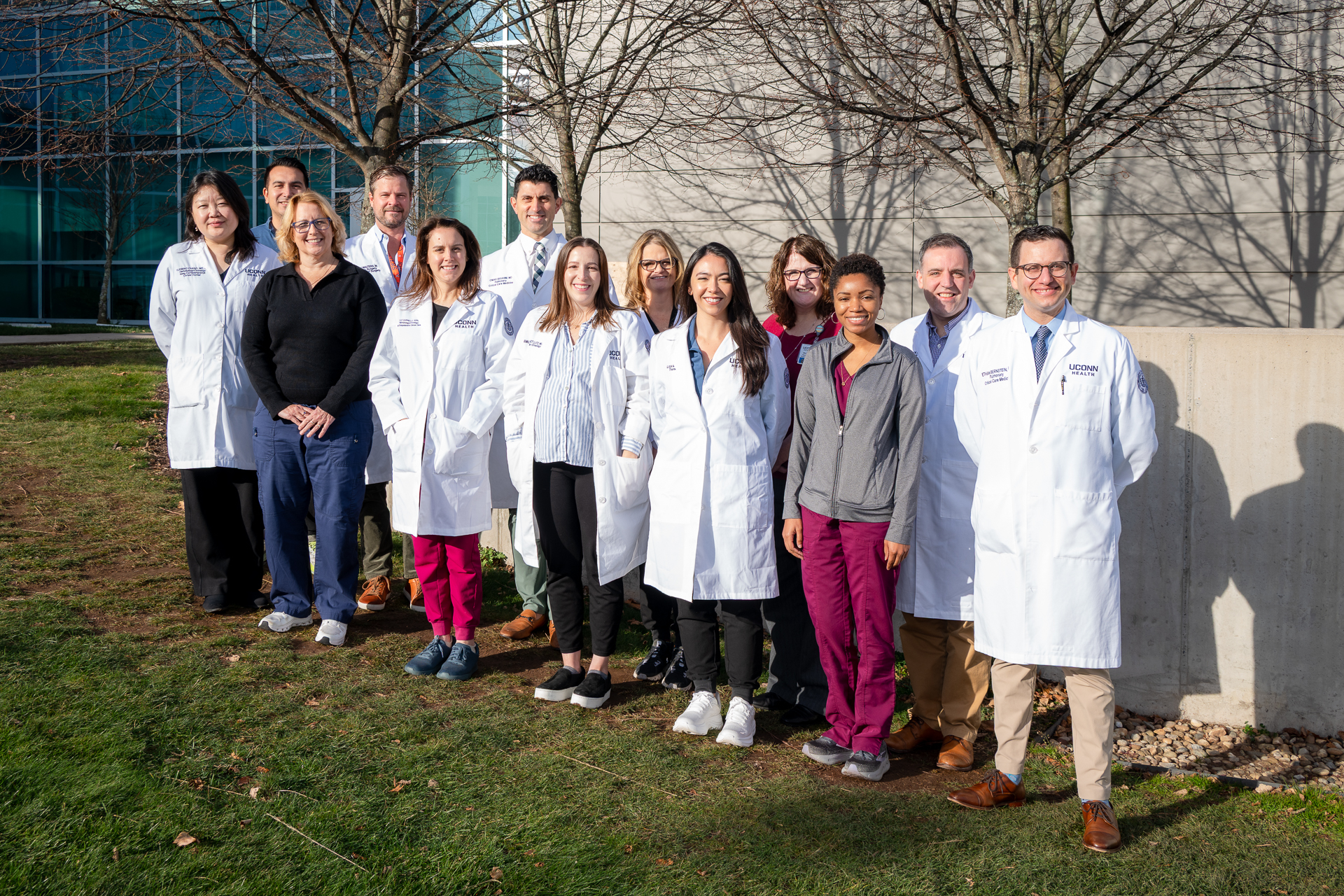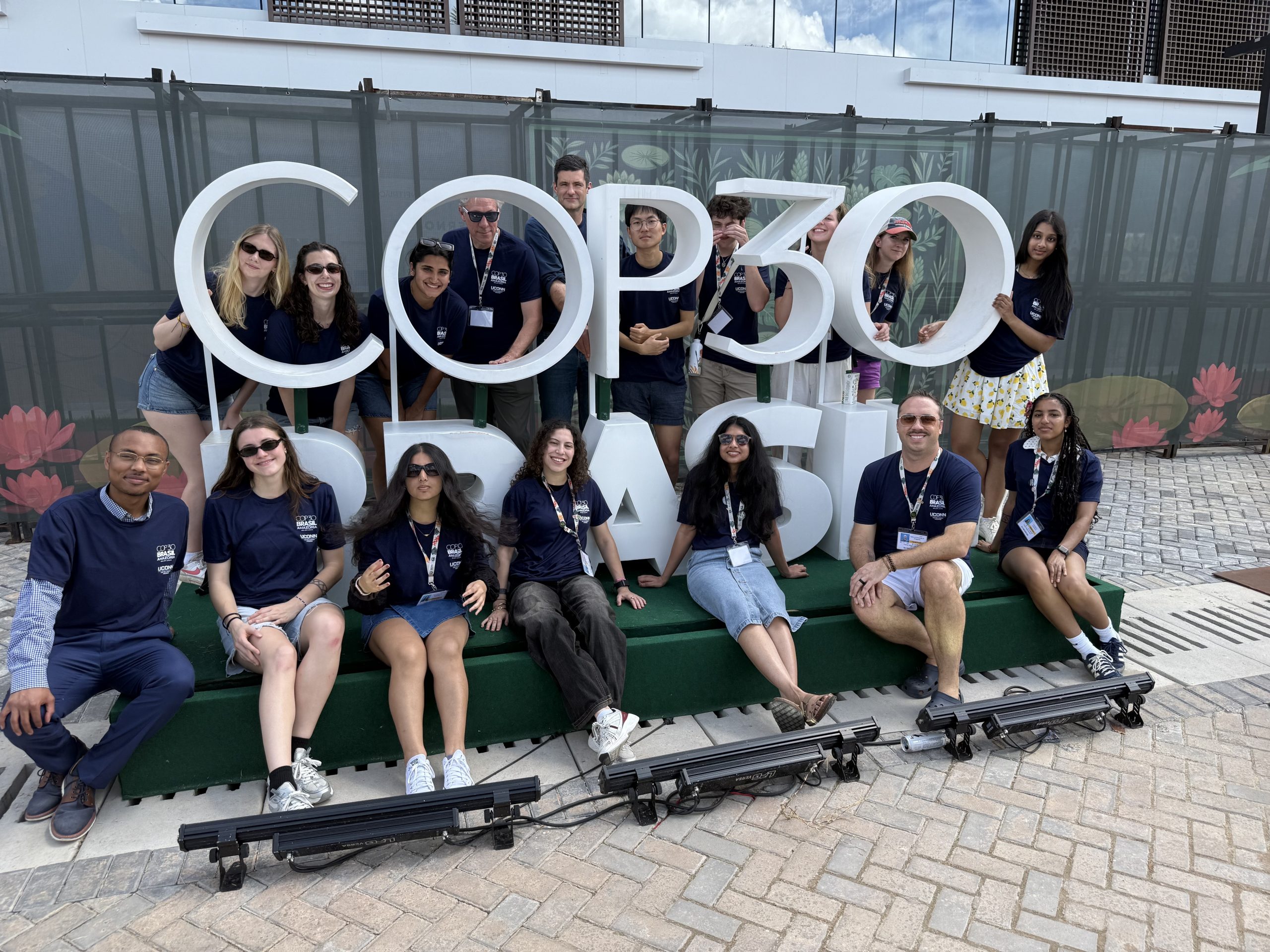A downtown Waterbury landmark has entered the next phase of its history as the new home of several UConn academic and research programs, complementing and expanding the wide range of offerings at the adjacent UConn Waterbury campus.
It also has a new name: The Neil O’Leary Building, honoring the former longtime Waterbury mayor who shepherded the 130-year-old Odd Fellows Hall from ruin to renaissance in partnership with UConn, local and state officials, and the building’s owners.
About 200 people, including scores of lifelong Waterbury residents, gathered last Thursday night at the building for the renaming and a ribbon-cutting event.
It included an open house and dedication ceremony with welcoming remarks from local and regional leaders including Lt. Gov. Susan Bysiewicz, U.S. Rep. Jahana Hayes, Waterbury Mayor Paul Pernerewski Jr., and several others.
“This is such an exciting time for UConn and our beautiful state, and this building is a testament to what’s possible,” Bysiewicz said of the six-story building, which had been unused and deteriorating for about 15 years before the restoration.
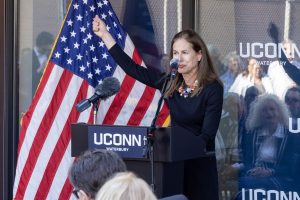
Green Hub Development III LLC purchased and renovated the landmark building through a public-private partnership, in which O’Leary was one of the most enthusiastic proponents. UConn is leasing about 26,300 square feet to expand the University’s offerings in nursing, allied health, and other programs.
Thursday night’s event celebrated not only UConn Waterbury’s growing downtown presence, but also O’Leary’s vision as the driving force in the rescue, restoration, and reuse of the once-crumbling historic structure.
“Mayor O’Leary recognized the potential of this structure when many considered it beyond saving,” said Fumiko Hoeft, UConn Waterbury’s dean and chief administrative officer.
“His vision – combined with the University’s leadership and strong partners – brought it back to life. Today, it stands ready to serve the community and generations of UConn students.”
Just a few years ago, O’Leary knew it might be a hard sell to convince others of the potential he’d long seen in the structure.
He laughed Thursday as he recalled shepherding UConn leaders through its dank, crumbling hallways – all wearing hard hats and face masks, led by flashlights, and carrying umbrellas to shield them from the rain that came in through the roof’s many holes.
Today, the building is pristine, bright, and welcoming.
It’s home to UConn’s clinic-style nursing and health care simulation rooms, research facilities, study lounges, office and administrative space, a spacious former banquet room, and other areas suitable for maker space, incubator studios, classes, and large gatherings.
The building also houses Access Rehab Centers, which held an open house during Thursday night’s event; and is home to the Waterbury Robotics Institute, a collaboration between UConn and Waterbury Public Schools.
Although speaker after speaker at Thursday night’s event lauded O’Leary, he said credit also goes to a wide range of partners that include Hoeft, UConn President Radenka Maric, UConn trustees Tom Ritter and Marilda Gandara, Waterbury’s current administration and legislative delegation, and many others.
“At the end of the day, what’s important is what we can do for the city’s and the state’s greatest assets – and that’s our students,” O’Leary said. “We must do everything in our power to support our rising students, and our partnership between our city and UConn is so strong.”
The six-story building, originally built for the local chapter of the International Order of Odd Fellows social group, is in a prime downtown location and dates to 1895.
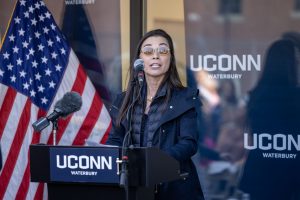
Its renovation was funded through a state grant to the City of Waterbury along with Green Hub’s private funding. It was modernized for today’s needs while retaining key elements of its history, including Venetian Gothic exterior features overlooking the Waterbury Green and the ornate ceiling in its former banquet hall.
UConn’s plan to expand its nursing education programs into the building is particularly noteworthy given the high demand in that profession, both statewide and specifically in Waterbury and the Naugatuck Valley region.
Maric, a frequent and enthusiastic visitor to UConn Waterbury, said Thursday night that the connections between the University and community go beyond the renovation of the Neil O’Leary Building.
“This is about vision, community, and unity … There’s something very special about this place, as a working-class community whose residents care deeply for each other,” Maric said.
The growth of UConn Waterbury’s campus and academic offerings also complements the UConn Strategic Plan, which includes ensuring that the campuses in Waterbury, Hartford, Stamford, and Avery Point offer signature programs that are destinations within UConn.
UConn’s Board of Trustees approved the expansion plans in 2023, which are part of a larger commitment to strengthen the University’s presence and partnerships in the Naugatuck Valley.
They include UConn’s deep involvement in the Waterbury Promise scholarship program, under which many dozens of Waterbury graduates are attending the University; and the establishment and growth of the allied health sciences major on the campus.
UConn Waterbury also prides itself on providing a tight-knit community that serves students’ individual needs while ensuring they can access world-class UConn programs in undergraduate and graduate-level fields that lead to strong, satisfying career paths.
UConn Waterbury’s new space in the Neil O’Leary Building will be ideal for serving current students while also advancing community partnerships with schools, the City of Waterbury, the regional business community, and other groups.
The 26,000 square feet of academic, research, and community space that UConn is leasing also provides resources for humanities and social sciences.
That includes the HACER Lab, a hub for humanistic inquiry, research, and pedagogy developed in collaboration with Waterbury students and community partners; the Ideas + Impact initiative; and other learning communities focused on social impact, sustainability, and health-related projects.
These facilities will be used by programs in nursing, allied health, psychological sciences, urban and community studies, humanities and social sciences, business, and community partnerships.
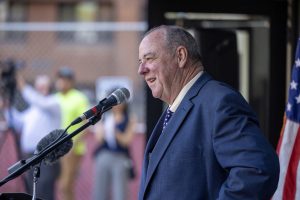
Additionally, it will serve as the home for the Haskins Global Literacy Hub, a newly formed partnership between Yale, UConn Global Affairs, and UConn Waterbury focused on promoting education and conducting innovative research to enhance literacy globally.
The Odd Fellows Building has a rich history in the City of Waterbury, and its restoration and use by UConn carries strong emotional and economic significance to the area.
Built at a cost of $100,000 and said to be among the finest of its time in the region, the building’s opening in 1895 drew more than 5,000 members of the group from around the East Coast and was featured in the New York Times.
In fact, the opening was marked by a parade and the event was so important to the city that all factories and schools were closed for the day, and all business shut down at noon, according to another Times article.
A clothing store occupied the first floor for about its first five years in addition to the meeting rooms and social spaces used by the Odd Fellows and others on the higher floors. Later, the popular Grieve, Bissett & Holland department store was in the building from 1902 until the mid-1960s.
Pernerewski, who joked that his role as Waterbury’s current mayor includes many ribbon-cuttings at projects that O’Leary initiated during his tenure, said Thursday that the building’s revival is symbolic: Just as O’Leary envisioned a promising future for a crumbling building, that building now provides a promising future for those who will use it.
“Where others saw obstacles, Neil always saw potential. That’s exactly what he saw in this building: a structure that had seen better days, but which could be brought back to life and serve this community in a powerful way,” Pernerewski said.
“This building and all it’s going to bring to UConn Waterbury and to our city is a reflection of Neil’s vision for Waterbury: bold, hopeful, and committed to progress.”
